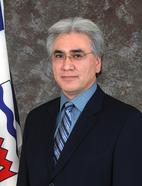Right from the earliest days of the first discussions between the Government of the Northwest Territories, the federal government and Aboriginal parties that established working relationships through the Aboriginal Summit and through the Intergovernmental Working Forum, through providing resources and dollars and people to help repair, in fact, I would say the agreement-in-principle is an example of those type of resources. That document was improved by Section 6 of the agreement that would put a government-to-government relationship and how we work together going forward in these matters. The language throughout the agreement talks about protecting the rights that are already established, that this agreement cannot take away from that.
We recognize that in a number of these areas in the claims there needs to be discussions. We’re open, we’ve offered, and we’ve asked them to be a part of the working groups and negotiations as we go forward. We cannot make them come to the table. Their choice. In fact, when you look at the signatories, it was at those tables that it was felt that the Aboriginal groups wanted a different process of signing the agreement and not to be as it came forward between the GNWT and the federal government. That was accepted and has gone forward on that basis. That’s also why we’ve included the additional process of having the parties come to the table throughout this process. It wasn’t a matter of you have to sign it to start it and you’re always out. The fact is, the door is open to come to the table.
I hope when we send out the correspondence on the work plan and they see the work being done, that will encourage them to come to the table and influence those discussions.
